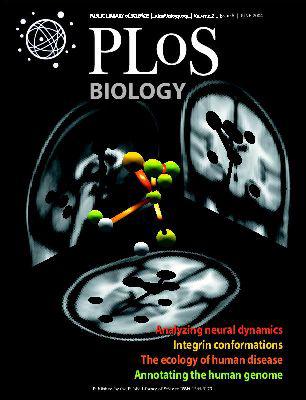The kinase Rio1 and a ribosome collision-dependent decay pathway survey the integrity of 18S rRNA cleavage
IF 7.8
1区 生物学
Q1 BIOCHEMISTRY & MOLECULAR BIOLOGY
引用次数: 0
Abstract
The 18S rRNA sequence is highly conserved, particularly at its 3′-end, which is formed by the endonuclease Nob1. How Nob1 identifies its target sequence is not known, and in vitro experiments have shown Nob1 to be error-prone. Moreover, the sequence around the 3′-end is degenerate with similar sites nearby. Here, we used yeast genetics, biochemistry, and next-generation sequencing to investigate a role for the ATPase Rio1 in monitoring the accuracy of the 18S rRNA 3′-end. We demonstrate that Nob1 can miscleave its rRNA substrate and that miscleaved rRNA accumulates upon bypassing the Rio1-mediated quality control (QC) step, but not in healthy cells with intact QC mechanisms. Mechanistically, we show that Rio1 binding to miscleaved rRNA is weaker than its binding to accurately processed 18S rRNA. Accordingly, excess Rio1 results in accumulation of miscleaved rRNA. Ribosomes containing miscleaved rRNA can translate, albeit more slowly, thereby inviting collisions with trailing ribosomes. These collisions result in degradation of the defective ribosomes utilizing parts of the machinery for mRNA QC. Altogether, the data support a model in which Rio1 inspects the 3′-end of the nascent 18S rRNA to prevent miscleaved 18S rRNA-containing ribosomes from erroneously engaging in translation, where they induce ribosome collisions. The data also demonstrate how ribosome collisions purify cells of altered ribosomes with different functionalities, with important implications for the concept of ribosome heterogeneity.激酶Rio1和核糖体碰撞依赖性衰变途径调查18S rRNA裂解的完整性
18S rRNA 序列高度保守,尤其是其 3′端,由内切酶 Nob1 形成。Nob1 如何识别其目标序列尚不清楚,体外实验表明 Nob1 容易出错。此外,3′端附近的序列与附近的类似位点是退化的。在这里,我们利用酵母遗传学、生物化学和下一代测序技术研究了 ATPase Rio1 在监控 18S rRNA 3′端准确性方面的作用。我们证明,Nob1 可误裂其 rRNA 底物,而误裂的 rRNA 会在绕过 Rio1 介导的质量控制(QC)步骤后积累,但在具有完整 QC 机制的健康细胞中则不会。从机理上讲,我们发现 Rio1 与误解的 rRNA 的结合力弱于其与精确处理的 18S rRNA 的结合力。因此,过量的 Rio1 会导致误解的 rRNA 积累。含有被错误处理的 rRNA 的核糖体可以进行翻译,尽管翻译速度较慢,从而导致与尾随核糖体的碰撞。这些碰撞导致有缺陷的核糖体利用 mRNA QC 机器的一部分进行降解。总之,这些数据支持这样一个模型,即 Rio1 检查新生 18S rRNA 的 3′-端,以防止含有误切 18S rRNA 的核糖体错误地参与翻译,在翻译过程中引起核糖体碰撞。数据还证明了核糖体碰撞是如何纯化细胞中具有不同功能的核糖体的,这对核糖体异质性的概念具有重要意义。
本文章由计算机程序翻译,如有差异,请以英文原文为准。
求助全文
约1分钟内获得全文
求助全文
来源期刊

PLoS Biology
生物-生化与分子生物学
CiteScore
14.40
自引率
2.00%
发文量
359
审稿时长
3 months
期刊介绍:
PLOS Biology is an open-access, peer-reviewed general biology journal published by PLOS, a nonprofit organization of scientists and physicians dedicated to making the world's scientific and medical literature freely accessible. The journal publishes new articles online weekly, with issues compiled and published monthly.
ISSN Numbers:
eISSN: 1545-7885
ISSN: 1544-9173
 求助内容:
求助内容: 应助结果提醒方式:
应助结果提醒方式:


